Android Central Verdict
The iQOO 11 gives us an early look at the Snapdragon 8 Gen 2's potential. The phone nails the fundamentals: the flat 144Hz AMOLED screen is a joy to use, the camera takes fabulous photos, and the large battery lasts all day and charges at 120W. The iQOO 11 is also launching with Android 13, and while it lacks polish in a few areas, this is a good option to consider if you're eager to try out the latest internal hardware.
Pros
- +
Stunning QHD+ AMOLED screen
- +
Latest Qualcomm silicon
- +
Good 50MP camera at the back
- +
All-day battery with 120W fast charging
- +
Launching with Android 13
Cons
- -
Limited global availability
- -
No ingress protection
- -
No wireless charging
- -
Wide-angle lens is average
Why you can trust Android Central
Vivo sub-brand iQOO had a good 2022 on the back of the iQOO 9 Pro and 10 Pro, and the brand is aiming to continue that momentum into 2023 with the introduction of the iQOO 11 series. While the numbered series is aimed at the high-end segment — just like the Vivo X series — iQOO has the ability to be a little more adventurous when it comes to designs and internal hardware. Given that iQOO as a brand is catered toward a younger audience, this strategy makes sense — it's what Xiaomi does with POCO.
As a result, iQOO's devices tend to have bold designs and offer exciting hardware, and that's no different with the iQOO 11. The phone continues the brand's partnership with BMW and features an interesting design at the back, and it is the first phone I'm using to be powered by Qualcomm's latest Snapdragon 8 Gen 2 platform.
With the iQOO 11 launching just six months after the iQOO 10 series, not a whole lot has changed elsewhere — the iQOO 11 uses the same 50MP camera, has the same 120W fast charging tech, and comes in similar storage configurations. But the addition of the Snapdragon 8 Gen 2 automatically makes the device that much more interesting, and with the phone heading to India, Indonesia, Malaysia, and Thailand in early 2023, there is a lot of potential for the iQOO 11 to get some meaningful attention in these markets.
iQOO 11: Pricing and availability
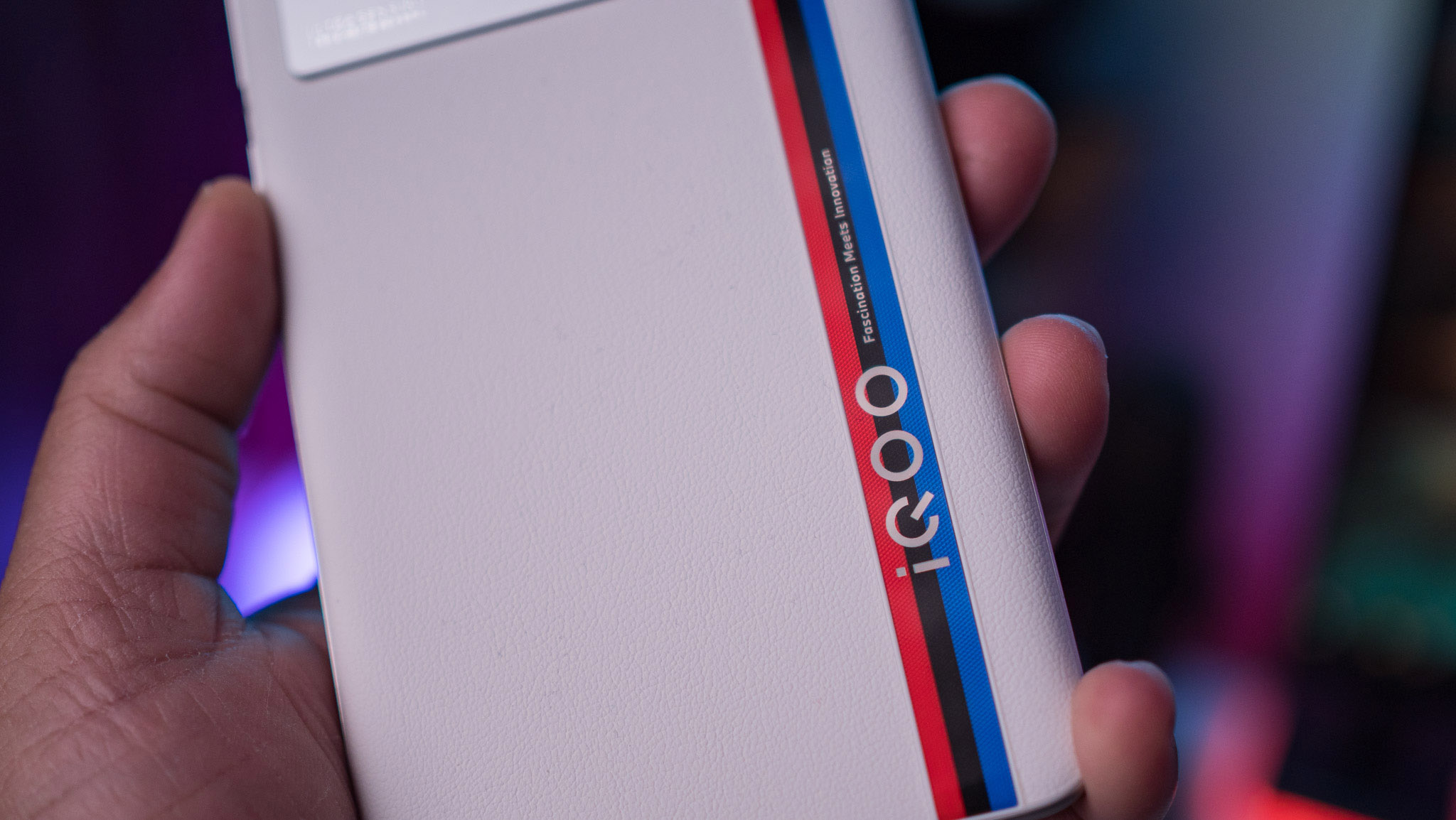
iQOO unveiled the iQOO 11 and 11 Pro at a launch event in China on December 8, and both devices are now on sale in the country. Vivo introduced the iQOO 11 globally at a launch event in India on January 10, and the device is making its way to Indonesia, Malaysia, and Thailand as well.
The base model retails for 3,799 RMB ($545) in China, and it comes with 16GB of RAM and 256GB of storage. Over in India, iQOO is rolling out the 8GB/256GB version for ₹59,999 ($730), and customers are also able to get their hands on the 16GB/256GB model by shelling out ₹64,999 ($800). Sales kick off January 12 in the country.
There isn't as big a difference between the iQOO 11 and 11 Pro as previous models; both phones have the same QHD+ 144Hz AMOLED panels with dynamic refresh and feature Qualcomm's latest silicon.
The iQOO 11 Pro has more versatile cameras thanks to the addition of a 50MP wide-angle lens, has a 4700mAh battery with 200W fast charging, and you get wireless charging. The standard iQOO 11 gets an 8MP wide-angle lens, and it has a larger 5000mAh battery but with 120W charging instead. Honestly, I don't see a tangible reason for picking up the 11 Pro over the standard model this year.
iQOO 11: Design
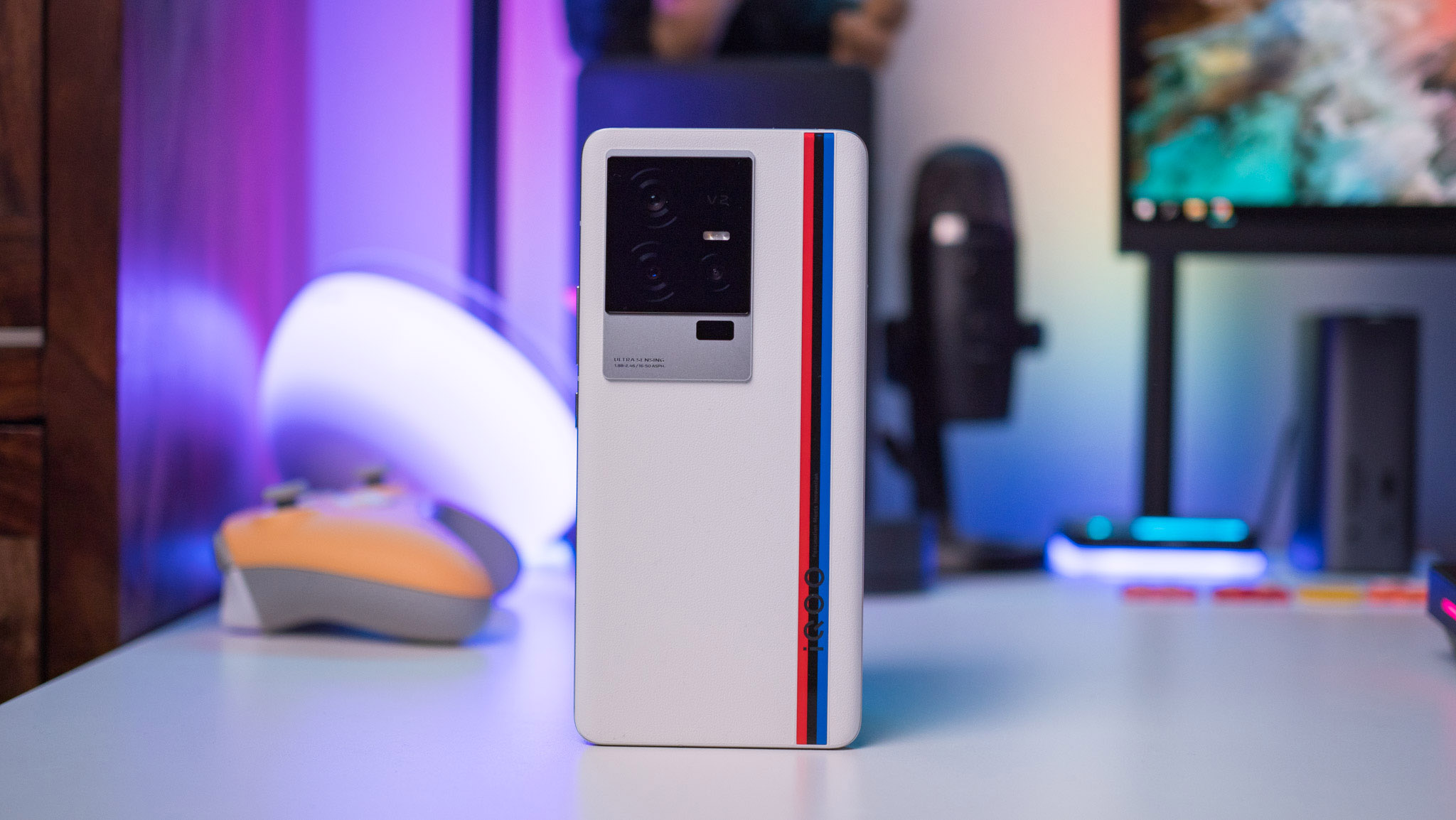
iQOO differentiated its devices by partnering with BMW over the last two years, and that collaboration is unchanged for the iQOO 11 series. The Legend variant of the iQOO 11 has a white finish with BMW M livery at the back, and it looks really good. iQOO says it went with a Clous de Paris pattern for the three vertical bands that run across the back, and it makes the BMW livery stand out a little bit more against the white back.
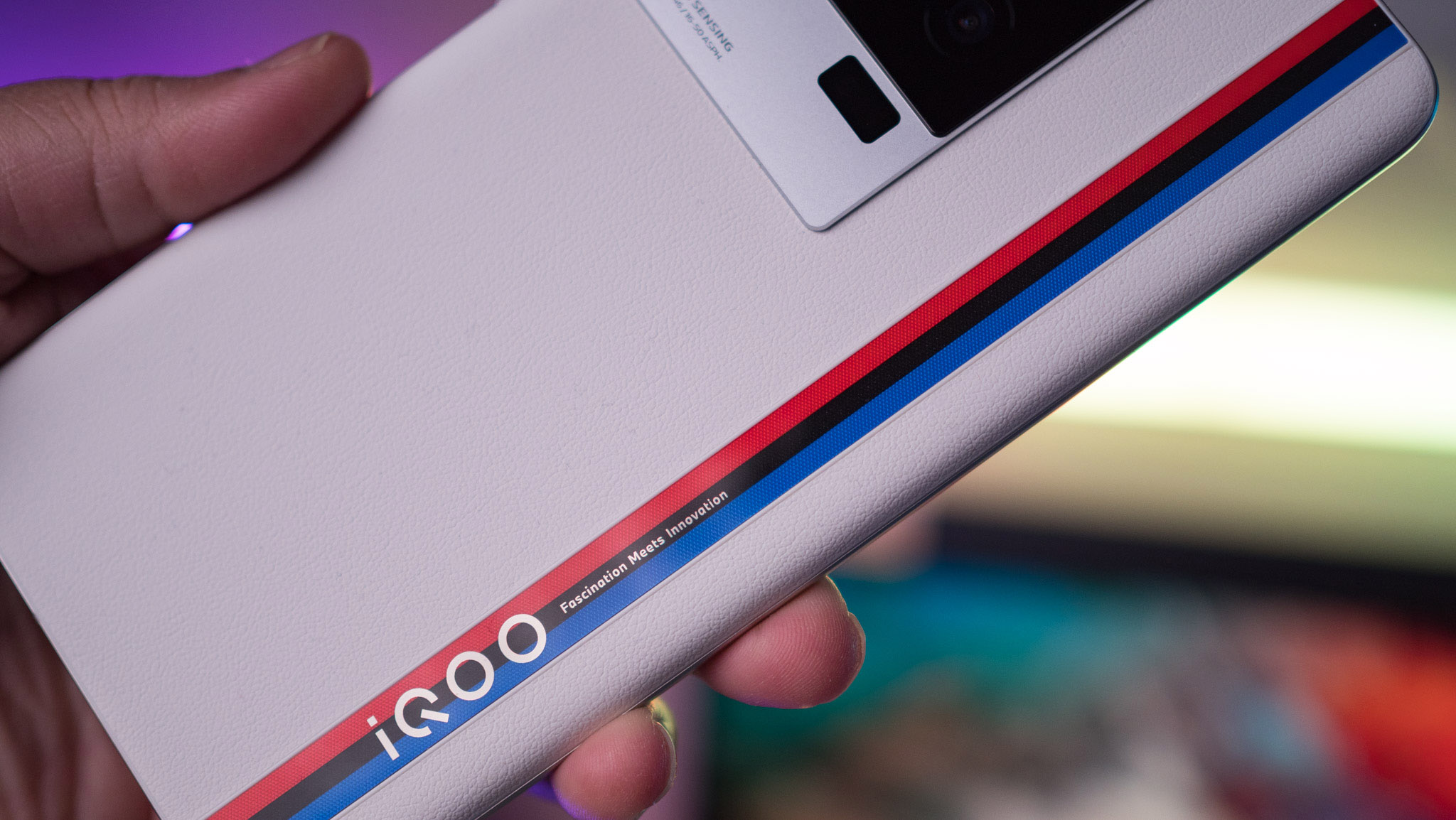
On that note, the back itself is made out of vegan leather this time, and it is exquisite. I like phones with leather backs, and iQOO did a great job with the grain and finish, and the iQOO 11 looks and feels like a high-end phone. The leather back is bolstered by a fiberglass finish, and that adds a little more durability to the design.
Dominating the design at the back is the oversized camera island; iQOO went with a metal housing for the island, and you'll find two large rings around the 50MP and 2x camera modules and a smaller ring for the 8MP wide-angle lens that's on the right. While the island is rather large, it doesn't protrude too much, so there isn't any noticeable wobble when using the iQOO 11 on a flat surface.
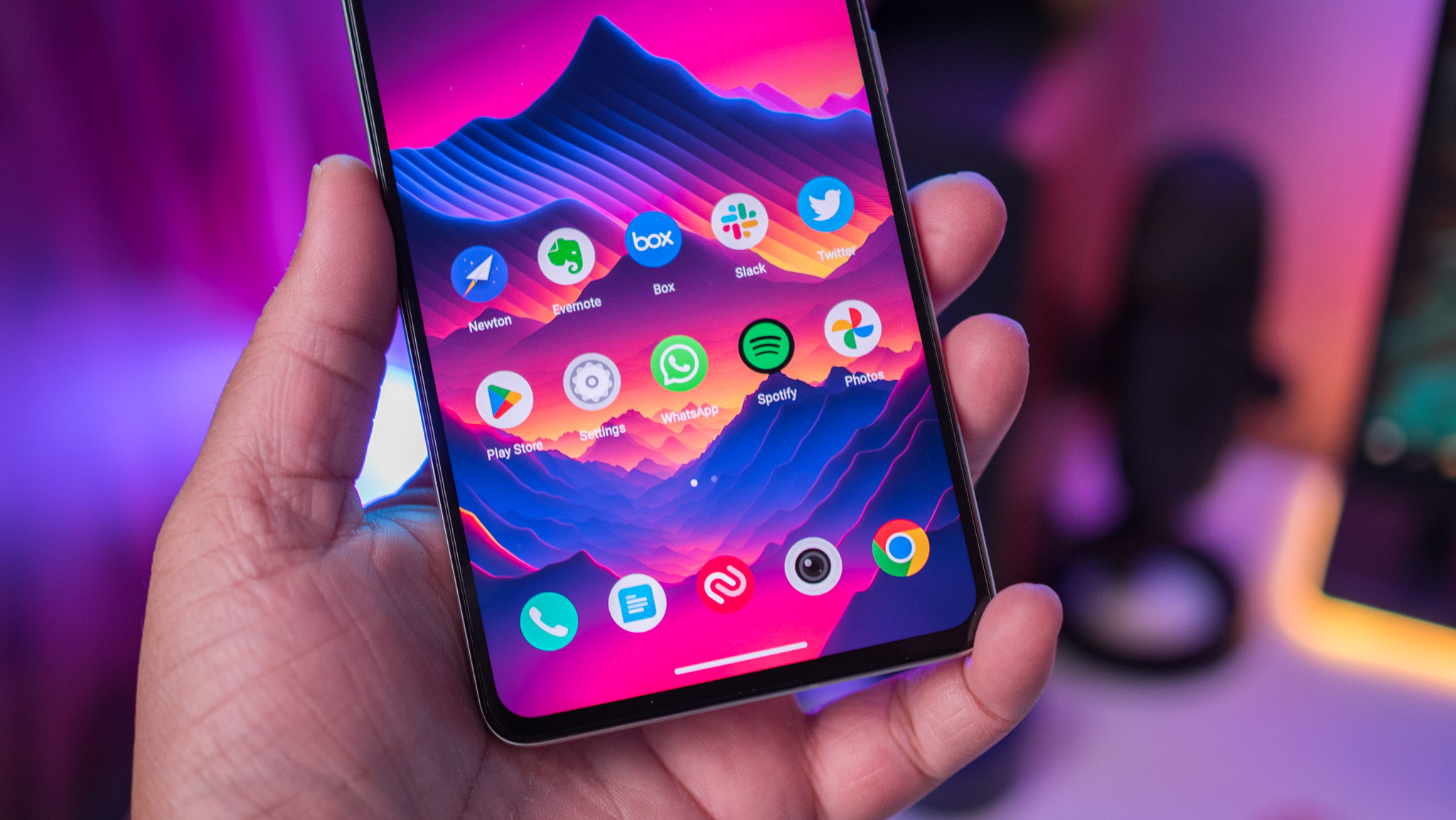
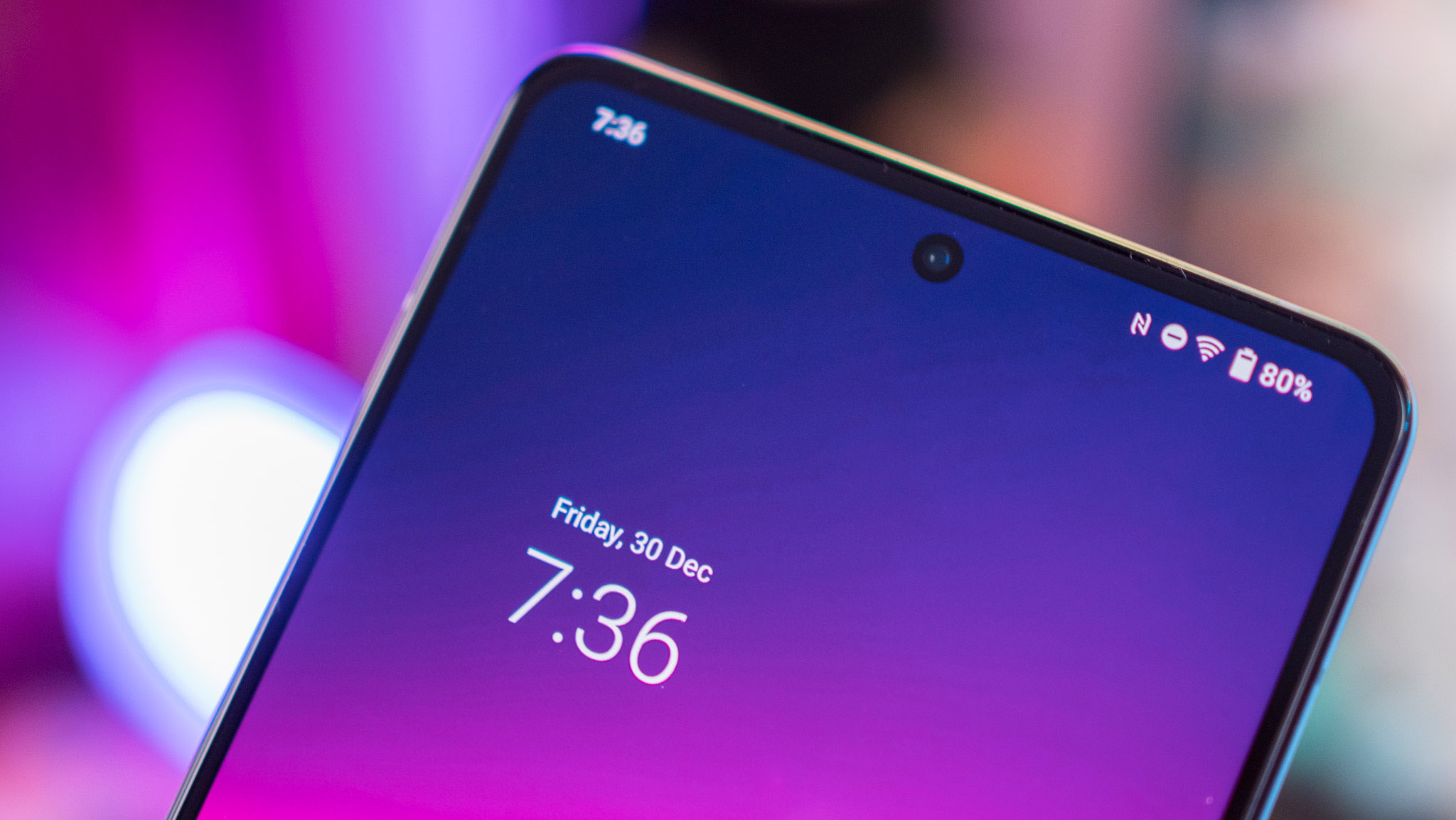
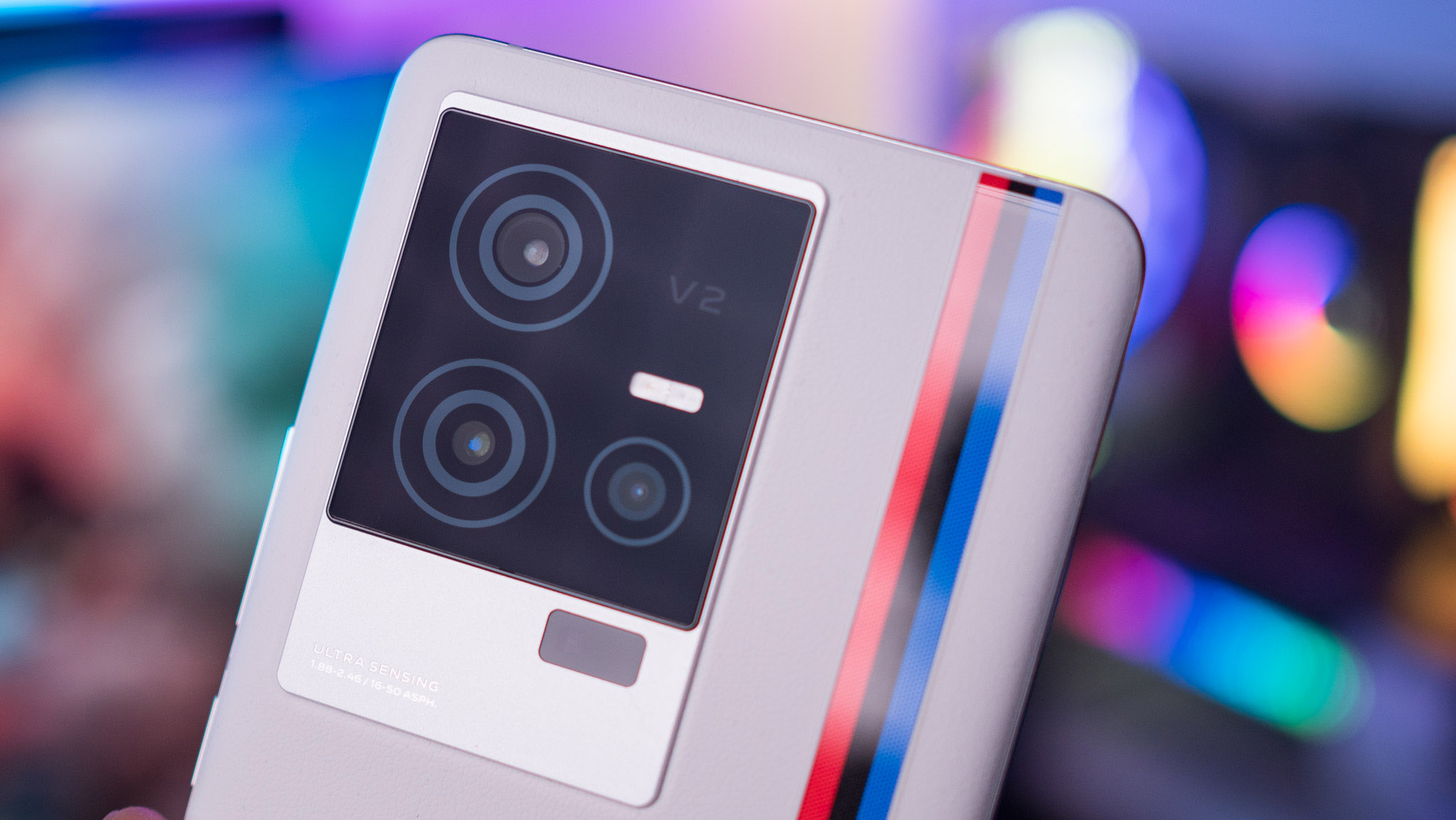
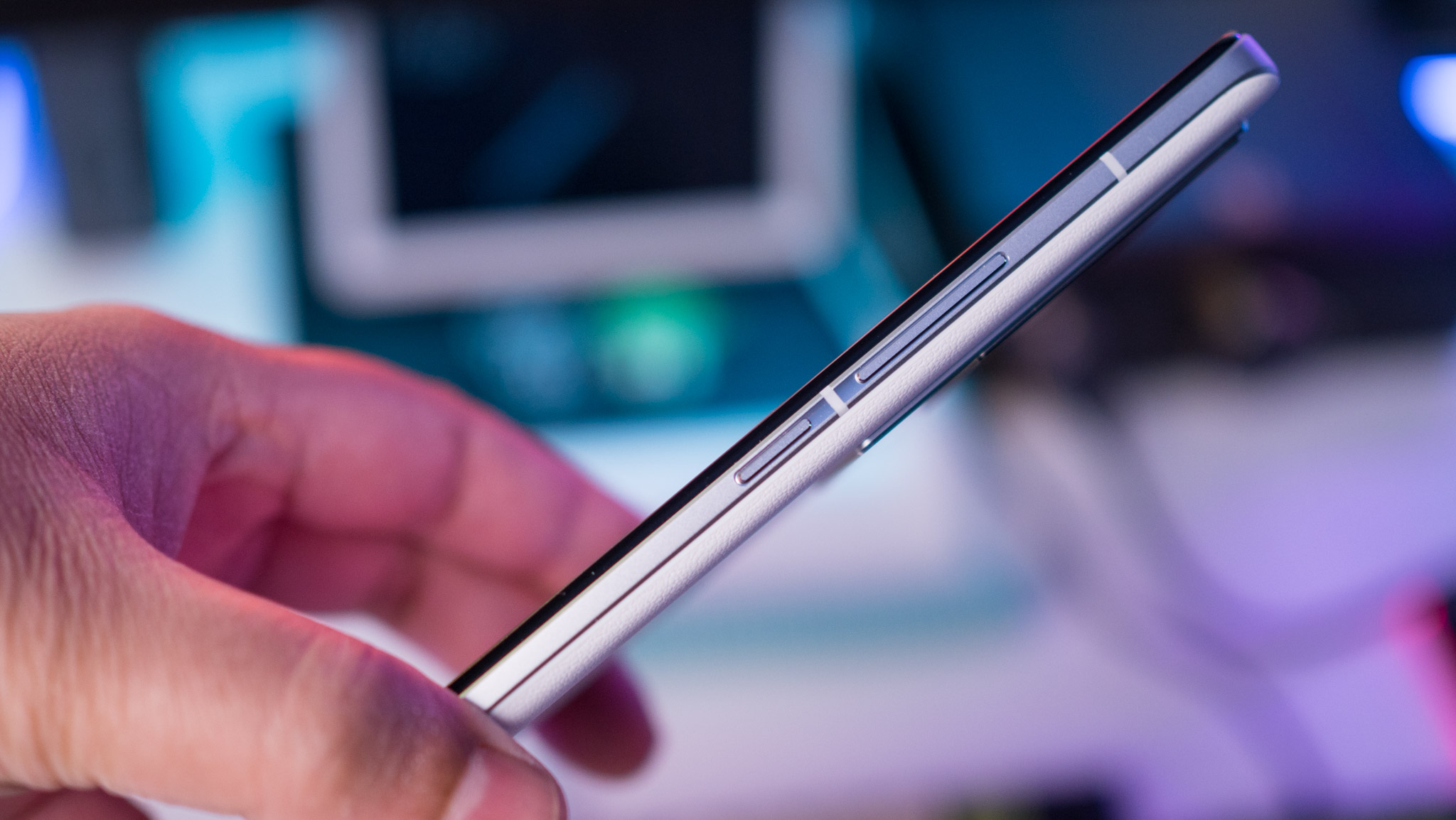
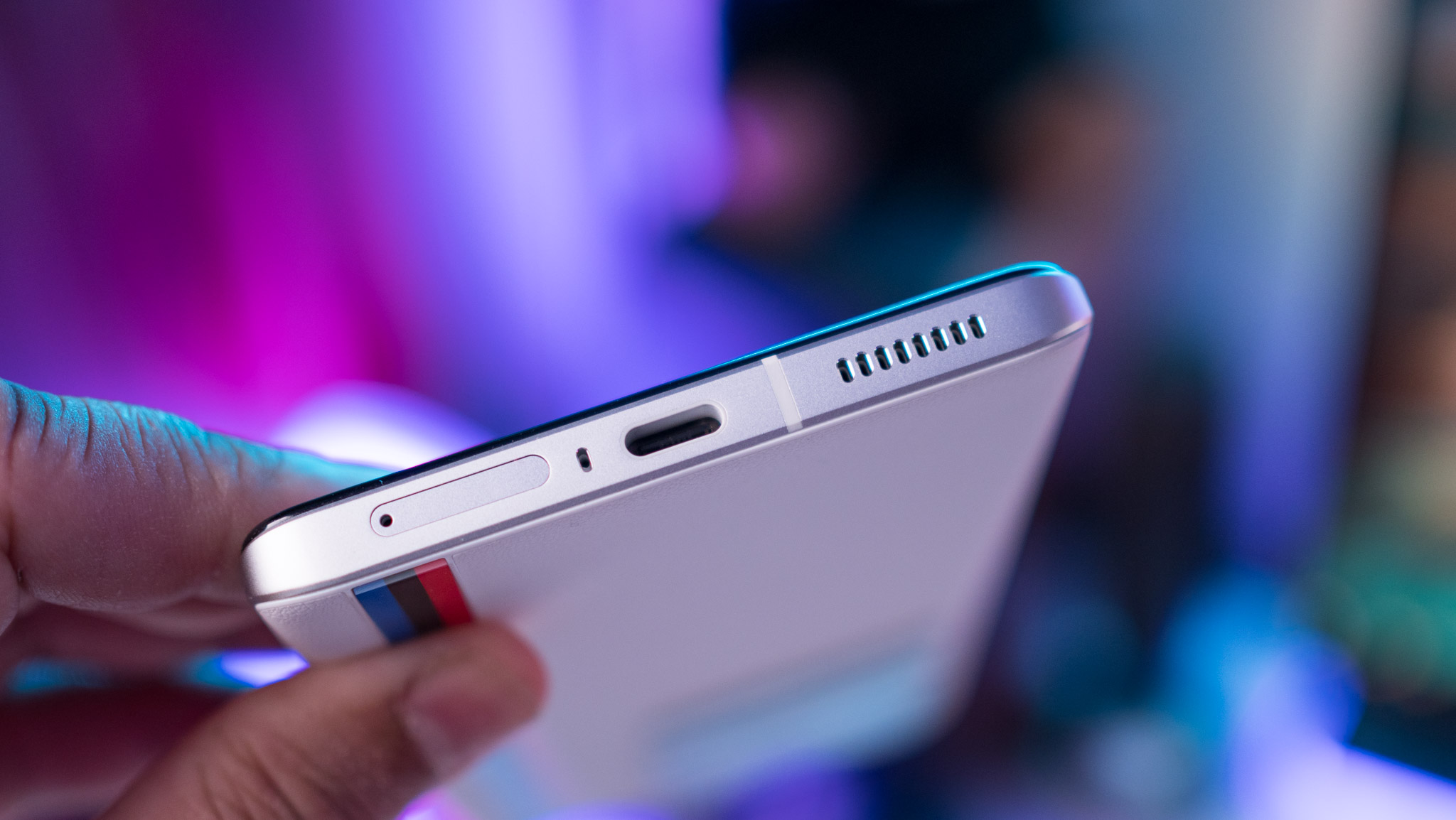
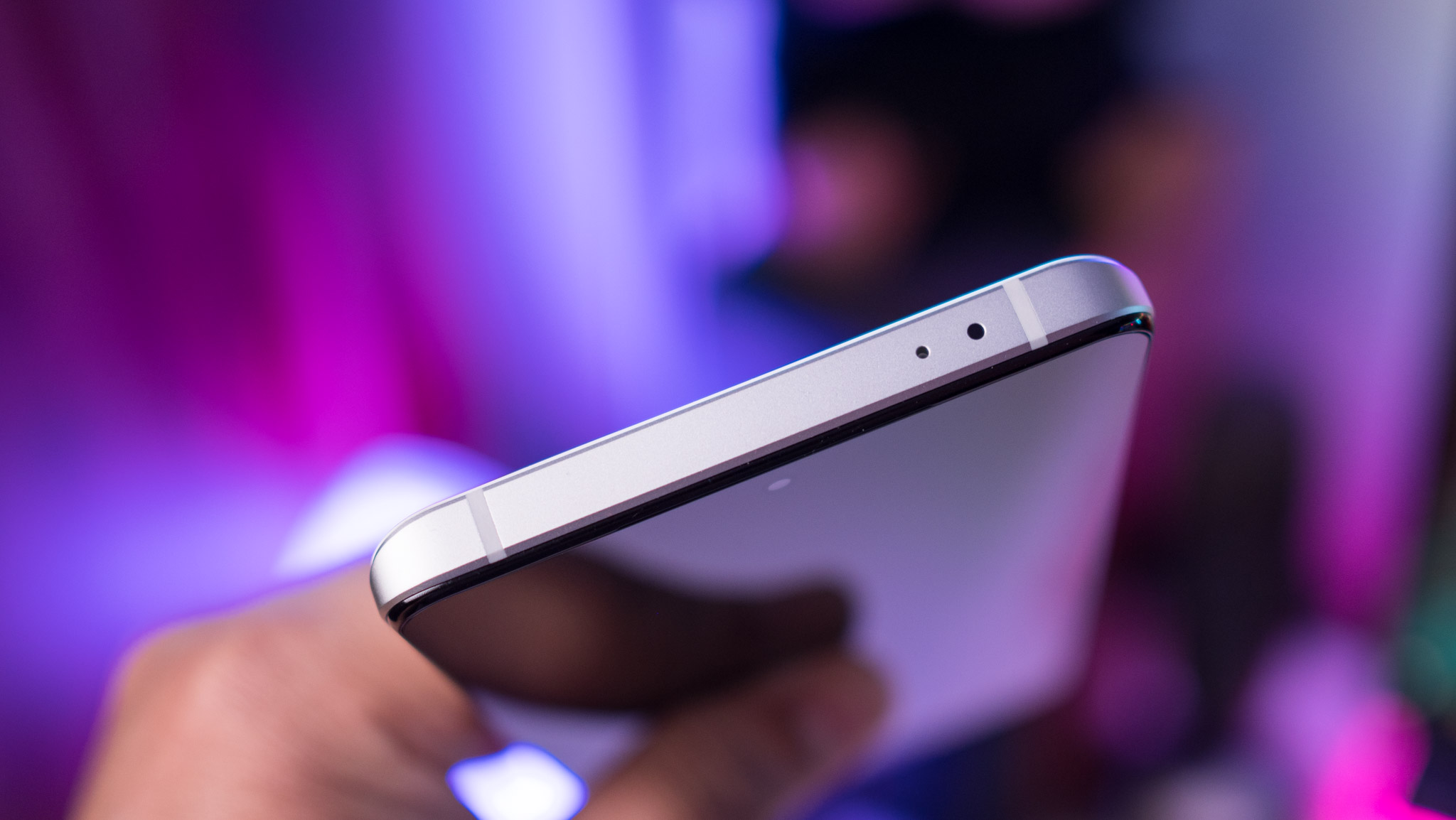
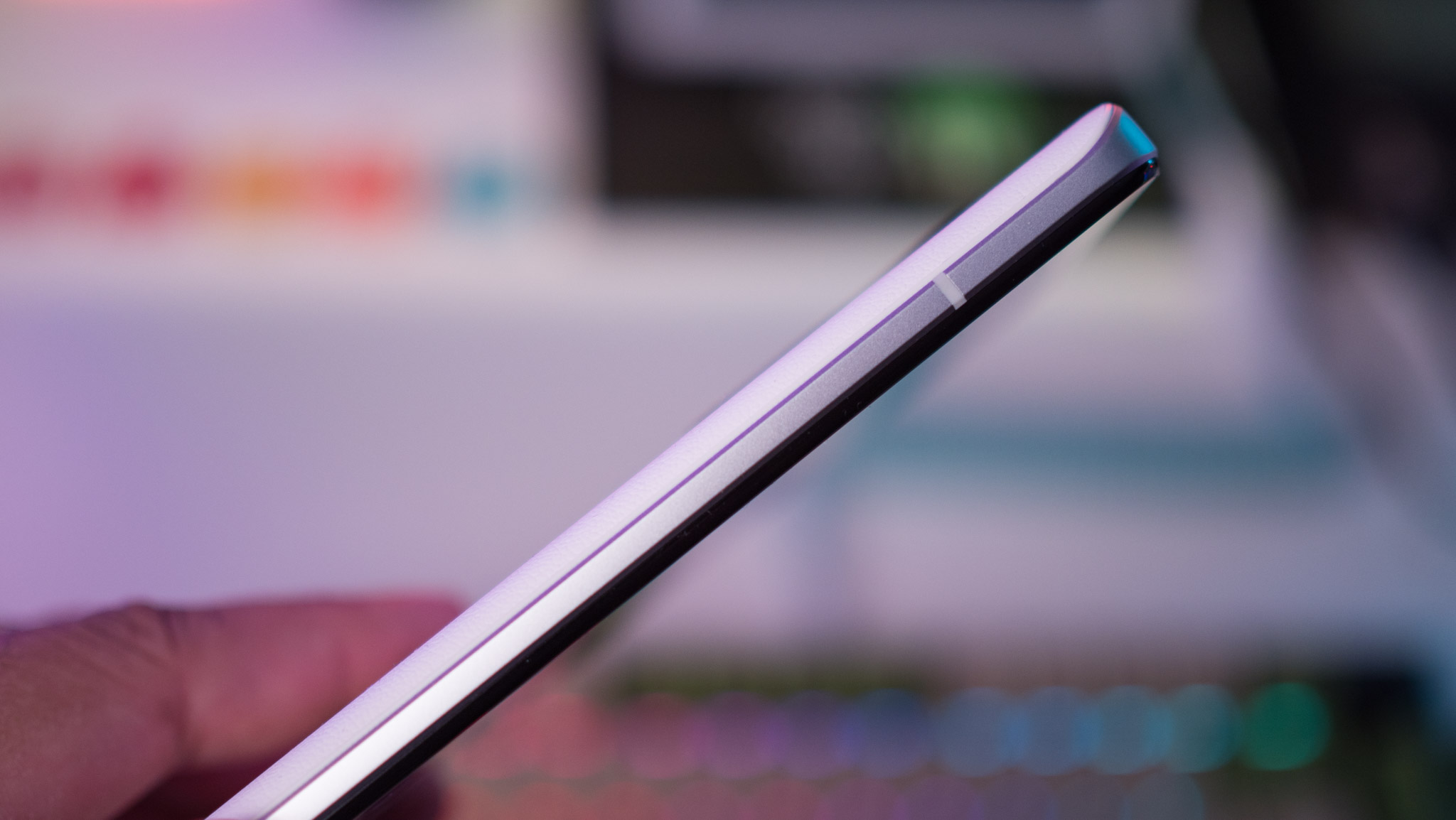
To its credit, iQOO isn't getting on the flat phone bandwagon, with the iQOO 11 featuring smoothly curving sides at the back. The screen is flat as well, and while the phone weighs 208g, it feels great to hold and use. There's also an IR blaster here, a new addition for iQOO's devices. At the bottom, you'll find a SIM card tray that holds two SIM cards.
iQOO 11: Screen
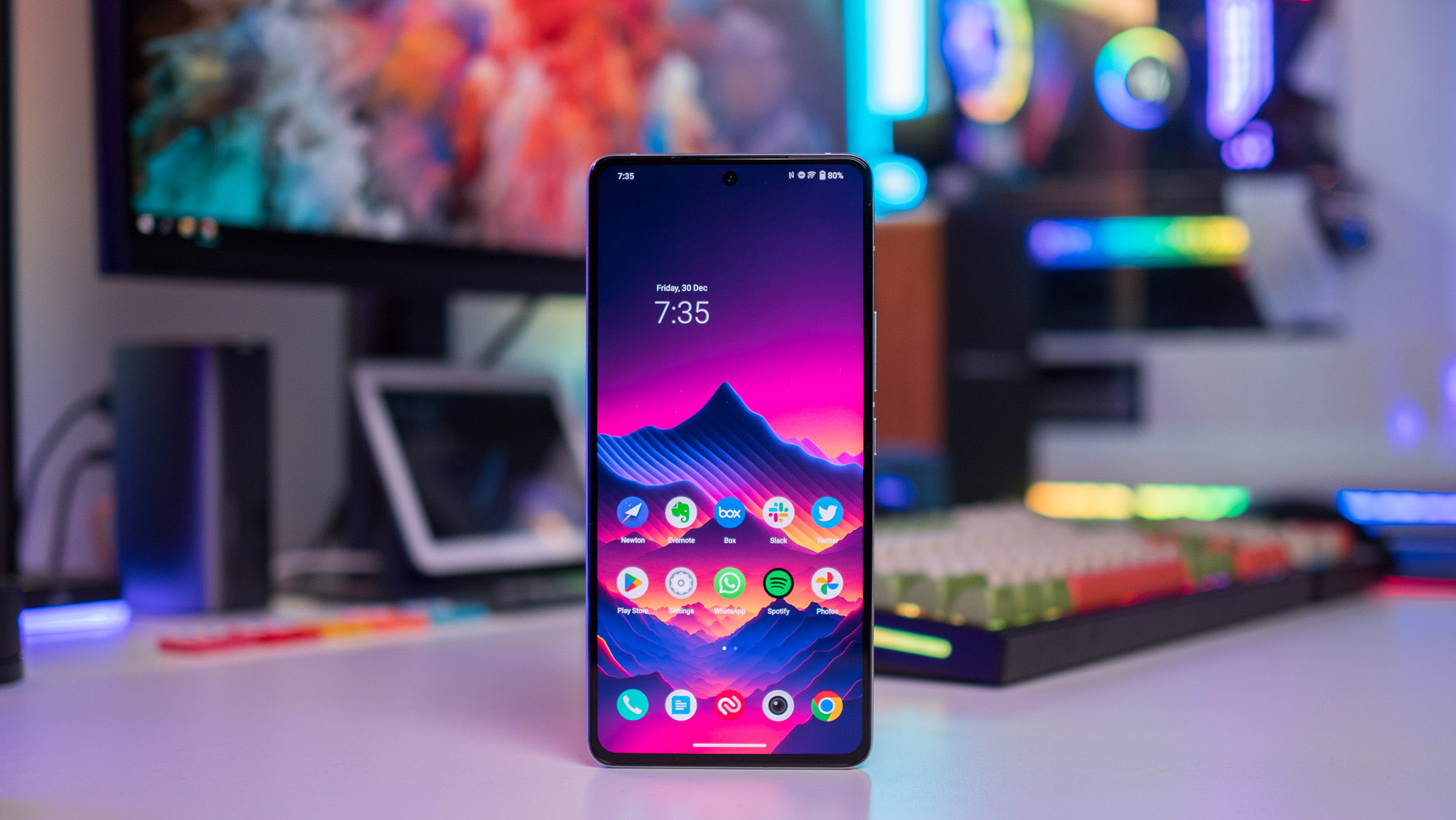
One of the biggest changes with the iQOO 11 is the switch to a 6.78-inch QHD+ (3200 x 1440) AMOLED screen with 144Hz refresh. This is the same panel that's used in iQOO's Pro models, and the fact that it's now making its way to the standard variant makes the iQOO 11 all the more enticing.
The panel itself has vibrant colors and gets very bright in outdoor use, and there's a decent amount of customizability when it comes to adjusting the color balance. There's dynamic refresh here as well, with the phone able to go down to 1Hz for static content and all the way to 144Hz when navigating the interface and browsing.
There is stereo sound, but you don't get identical channels. The secondary channel is tucked above the screen, and while it does make a difference while streaming videos or gaming, the effect isn't quite as immersive as the likes of the Xiaomi 12 Pro.
iQOO 11: Performance
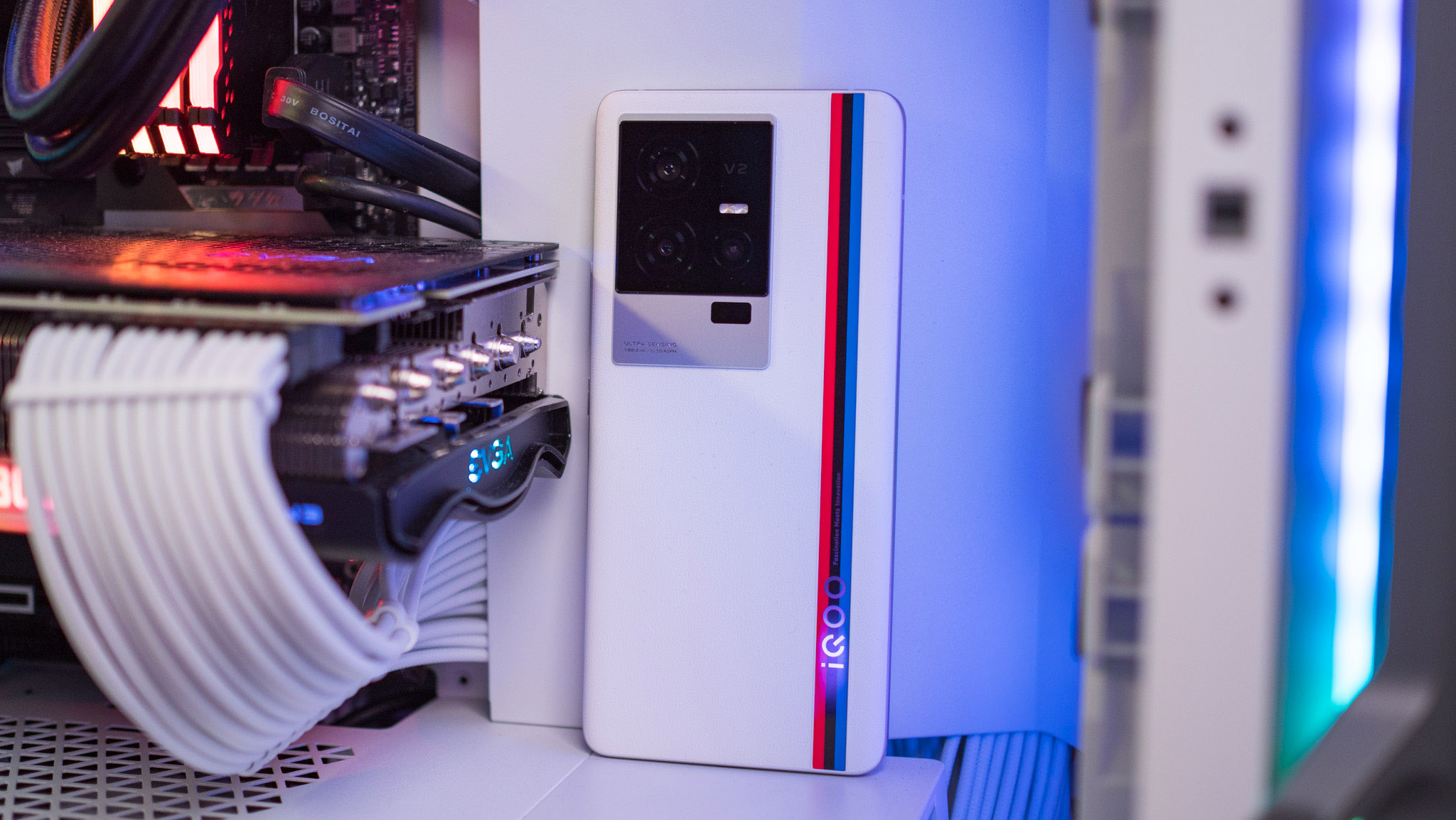
For the second year in a row, iQOO is one of the first manufacturers to roll out a device powered by the latest Qualcomm silicon. The Snapdragon 8 Gen 2 delivers decent gains over the 8+ Gen 1, but I didn't see any difference in real-world use. That's going to be the case for a while considering just how powerful the 8+ Gen 1 is in its own right.
Qualcomm switched to a new quad-cluster design with the Snapdragon 8 Gen 2 that sees cores in a 1+2+2+3 configuration, with the move touted to offer significant efficiency gains.
| Category | iQOO 11 |
|---|---|
| OS | Android 13, Funtouch OS 13 |
| Display | 6.78-inch 144Hz AMOLED QHD+ (3260 x 1440) LTPO4 |
| Chipset | Qualcomm Snapdragon 8 Gen 2, 1 x 3.2GHz Cortex X3, 2 x 2.8GHz Cortex A715, 2 x 2.8GHz Cortex A710, 3 x 2.0GHz Cortex A510, Adreno 740, 4nm |
| RAM | 12GB/16GB |
| Storage | 256GB/512GB |
| Rear camera 1 | 50MP f/1.9 Samsung GN5, 1.0um pixels, OIS, 8K video |
| Rear camera 2 | 8MP f/2.2 wide-angle |
| Rear camera 3 | 13MP f/2.5 telephoto |
| Connectivity | Sub-6 5G global bands, Wi-Fi 6, Bluetooth 5.3, NFC |
| Ingress Protection | None |
| Security | In-screen module |
| Audio | Stereo sound, USB-C, 24-bit/192kHz audio, AptX HD |
| Battery | 5000mAh, 120W fast charging |
| Dimensions | 164.9 x 77.1 x 8.4mm, 208g (205g for leather) |
| Colors | Legend (BMW M), Black, Green |
As this is the first Snapdragon 8 Gen 2-powered device I'm using, I put it through a few synthetic workloads to gauge where it stands against the 8+ Gen 1 and the A16 Bionic. I used the ASUS Zenfone 9 as the baseline for the 8+ Gen 1 and the iPhone 14 Pro for the A16 Bionic.
| Category | ASUS Zenfone 9 | iQOO 11 | iPhone 14 Pro |
|---|---|---|---|
| CrossMark (Overall) | 1008 | 1074 | 1328 |
| Productivity | 967 | 968 | 1299 |
| Creativity | 1042 | 1148 | 1517 |
| Responsiveness | 1036 | 1202 | 950 |
| Geekbench 5.1 (single-core) | 1311 | 1474 | 1882 |
| Geekbench 5.1 (multi-core) | 4286 | 4760 | 5400 |
| 3DMark Wild Life Extreme (score) | 2801 | 2988 | 3371 |
| 3DMark Wild Life Extreme (FPS) | 16.75 | 17.9 | 20.2 |
There's a 11% increase in Geekbench scores over the 8+ Gen 1, and although Qualcomm tweaked a few things for this generation, the 8 Gen 2 still doesn't measure up to the A16 Bionic in this particular area — iPhones continue to have the outright lead.
The iQOO 11 also has a slender lead in 3DMark, but once again, the A16 Bionic is dominant. That said, you'll find decent gains over the 8+ Gen 1, and that's a big deal in and of itself.
As for real-world use, there is no noticeable difference when playing games on the iQOO 11 versus a device like the Zenfone 9. What's clear is that there is more than adequate headroom on both platforms to deliver the best possible framerates while gaming, and I didn't see any lag whatsoever in the two weeks I used the iQOO 11. The same holds true in day-to-day use; the hardware is overkill for most mundane tasks like browsing and social media.
The phone gets a little warm during gaming sessions, but it is on par with devices powered by the 8+ Gen 1 — I didn't see anything untoward in this area.
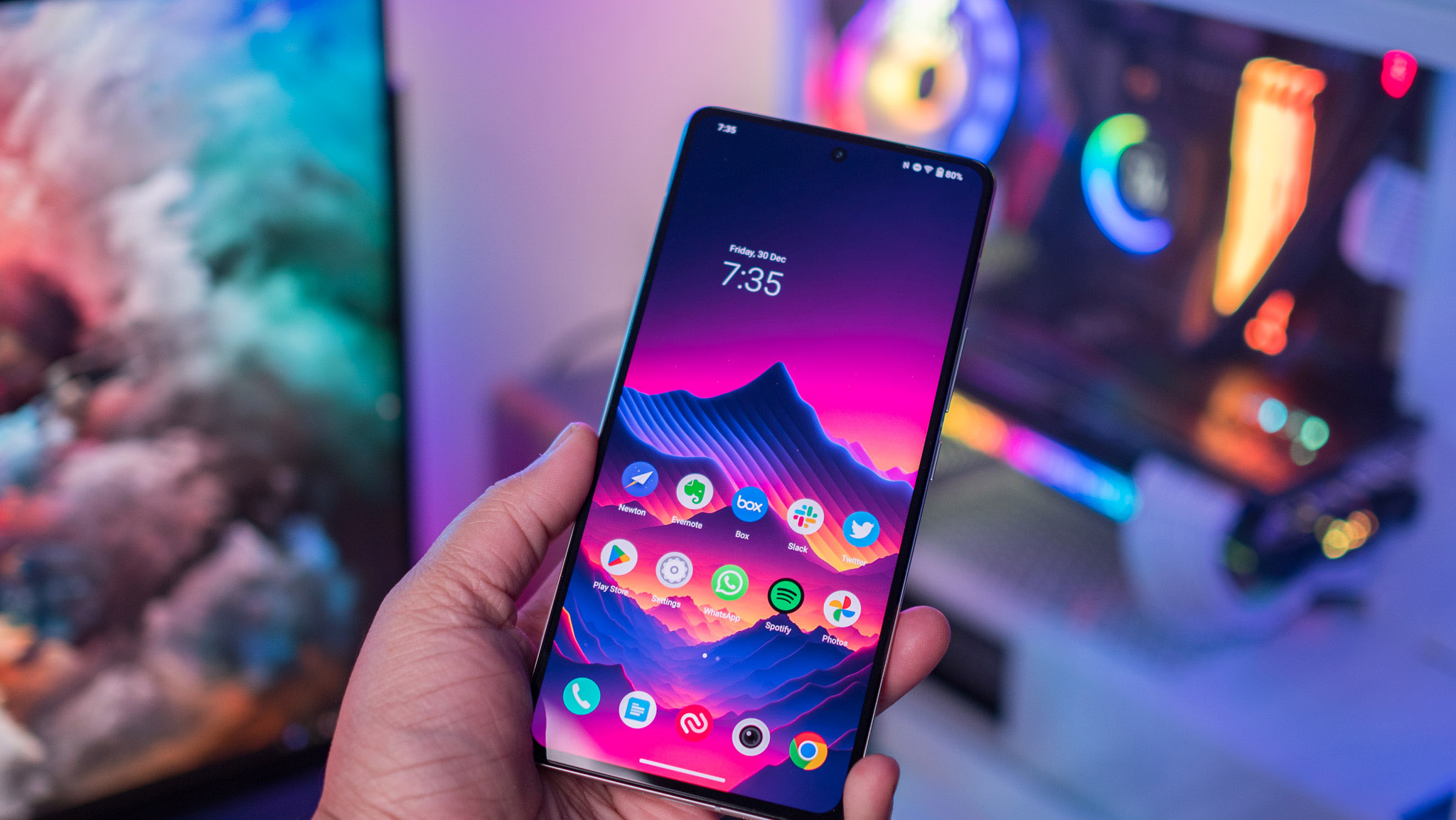
On that note, iQOO bundles 16GB of RAM and 256GB of UFS 4.0 storage as standard for the iQOO 11, and the device will be sold in an 8GB/128GB configuration in select markets. You also get decent 5G connectivity over Sub-6 frequencies, and the phone has Wi-Fi 6 along with Bluetooth 5.3 — same as its predecessor. There's NFC and the AptX HD audio codec as well, and while you don't get a 3.5mm jack, the bundled USB-C to 3.5mm connector in the box is ideal if you want to plug in wired audio gear to the iQOO 11.
Rounding out the hardware, the iQOO 11 gets an x-axis vibration engine that delivers good feedback, and although the in-screen module isn't quite as large as the one on the iQOO 9 Pro, it is reliable and fast to authenticate. The one issue I have with it is that it sits a little lower on the screen — similar to the OnePlus 9 series — and it makes accessing the module a little unwieldy. On that note, I would have liked to see some kind of ingress protection here, but that's still limited to the best Samsung phones.
As for battery life, I easily got a day's worth of use out of the large 5000mAh battery, and there's no need for any battery anxiety with this device. And when you do need to plug it in, the iQOO 11 charges at 120W. iQOO bundles a 120W charger in the box, and it doubles up as a 65W USB PD charger — a nice bonus.
It takes just 25 minutes to fully charge the device via the bundled charger, and a 15-minute charge gets you an astonishing 80% charge.
iQOO 11: Cameras
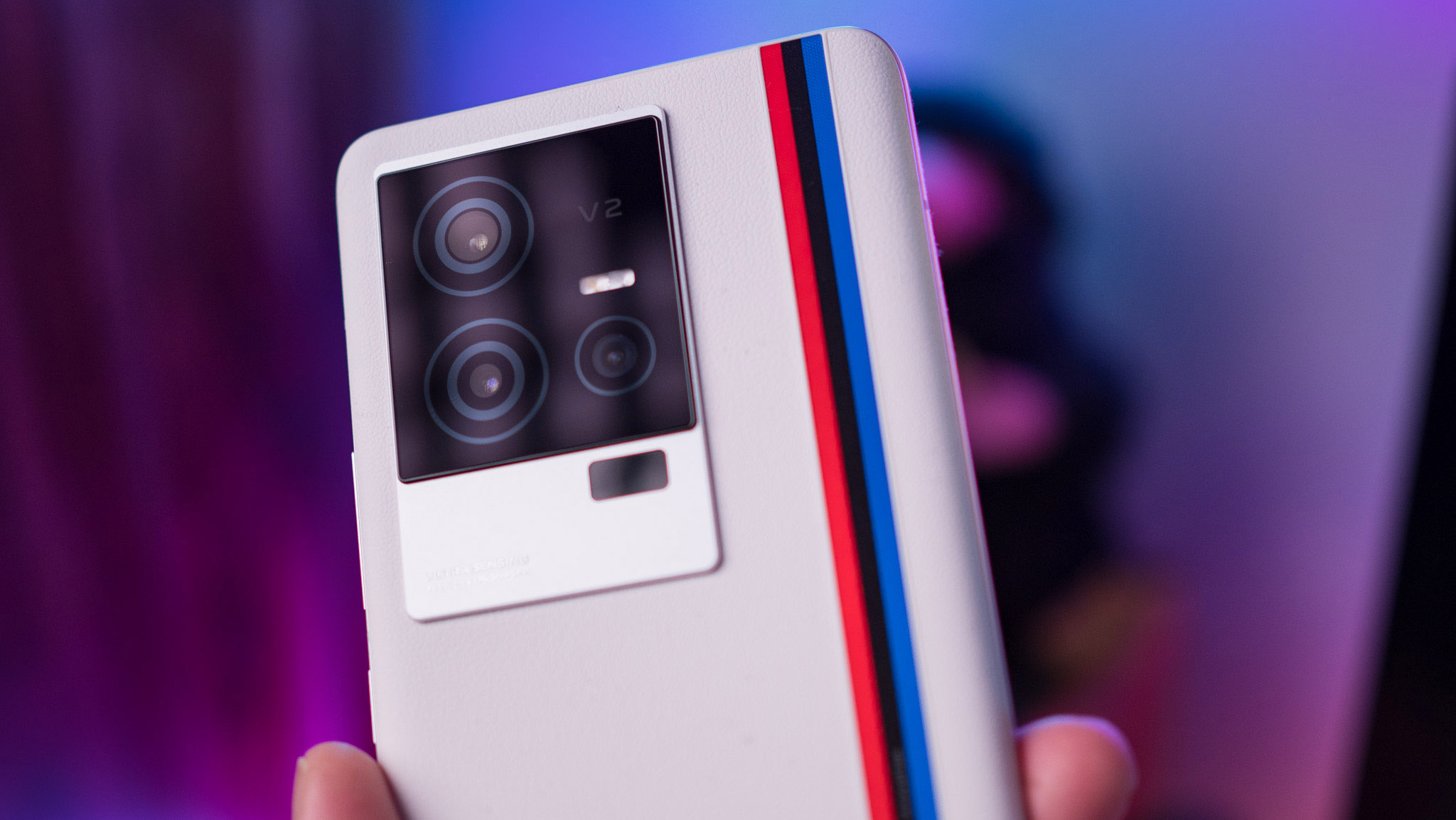
iQOO has decided to play it safe on the camera front, with the iQOO 11 featuring the same 50MP Samsung GN5 camera as its predecessor. The camera has 1.0um pixels and OIS, and it is joined by a 13MP lens that offers 2x optical zoom and an 8MP wide-angle lens. Up front, you'll find a 16MP camera — again, this is identical to what's featured in the iQOO 9/10 series.
The camera interface hasn't changed either, and is similar to what you get on other devices. All the shooting modes are laid out in a grid, and you can easily access the three lenses via dedicated toggles. You also get toggles for HDR, flash, beautify effects, and a natural color mode that uses scene recognition to adjust color balance.

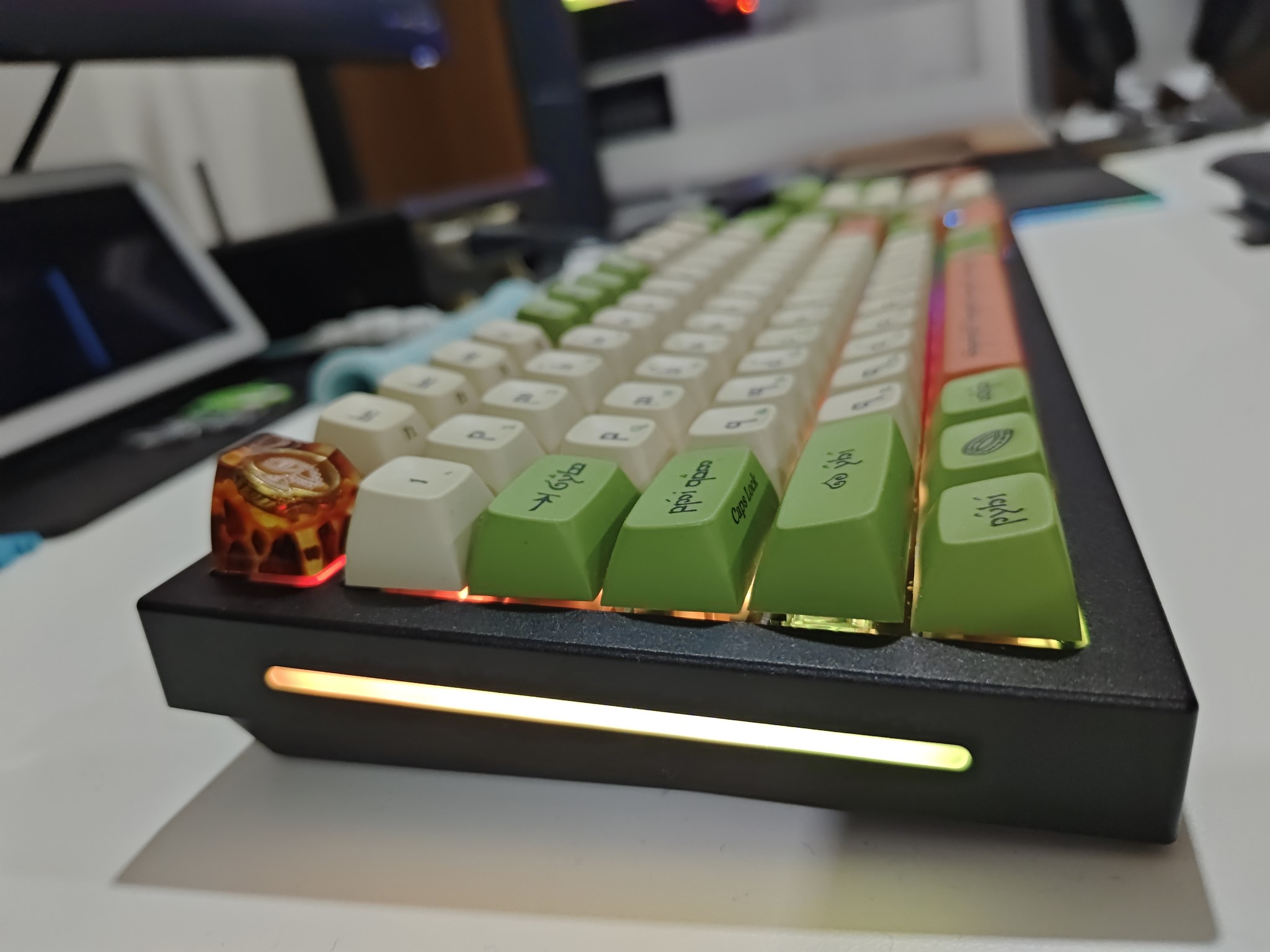

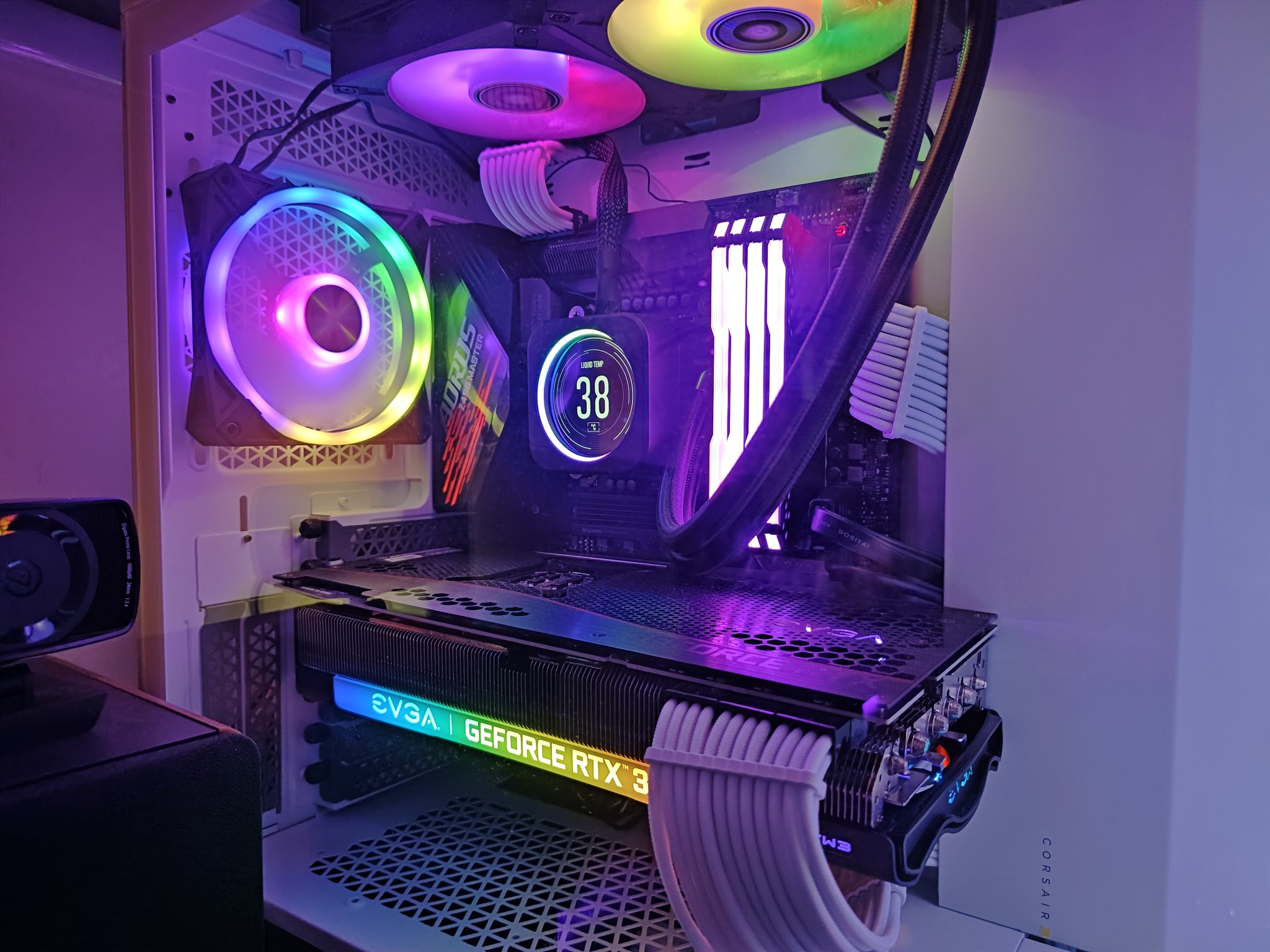

The GN5 module is a known quantity at this point, and it produces vibrant shots in daylight scenarios. Images taken outdoors have great dynamic range and good color accuracy, and they're not overly saturated. The camera takes amazing shots in low-light situations as well, rendering good colors and managing highlights well. The iQOO 11 is able to deliver images with accurate colors and excellent detail in scenes with varying amounts of brightness. This was a problem on the iQOO 9 Pro as the phone tended to blow out highlights, but the iQOO fares much better.
There's not much in the way of visible noise at night, and overall, the main camera on the iQOO 11 holds its own in this category. The 2x lens also does a decent enough job in its own right, producing photos with good vibrancy and detail. That said, the wide-angle lens just isn't good enough for a mid-range phone; it doesn't have the same color balance as the main camera, and it doesn't measure up in low-light conditions.
If you don't mind the lack of versatility, the iQOO 11 has a lot to offer. But if you need a reliable wide-angle lens and the ability to shoot at 5x or 10x zoom levels, you'll need to take a look at Xiaomi and Samsung's offerings.
iQOO 11: Software
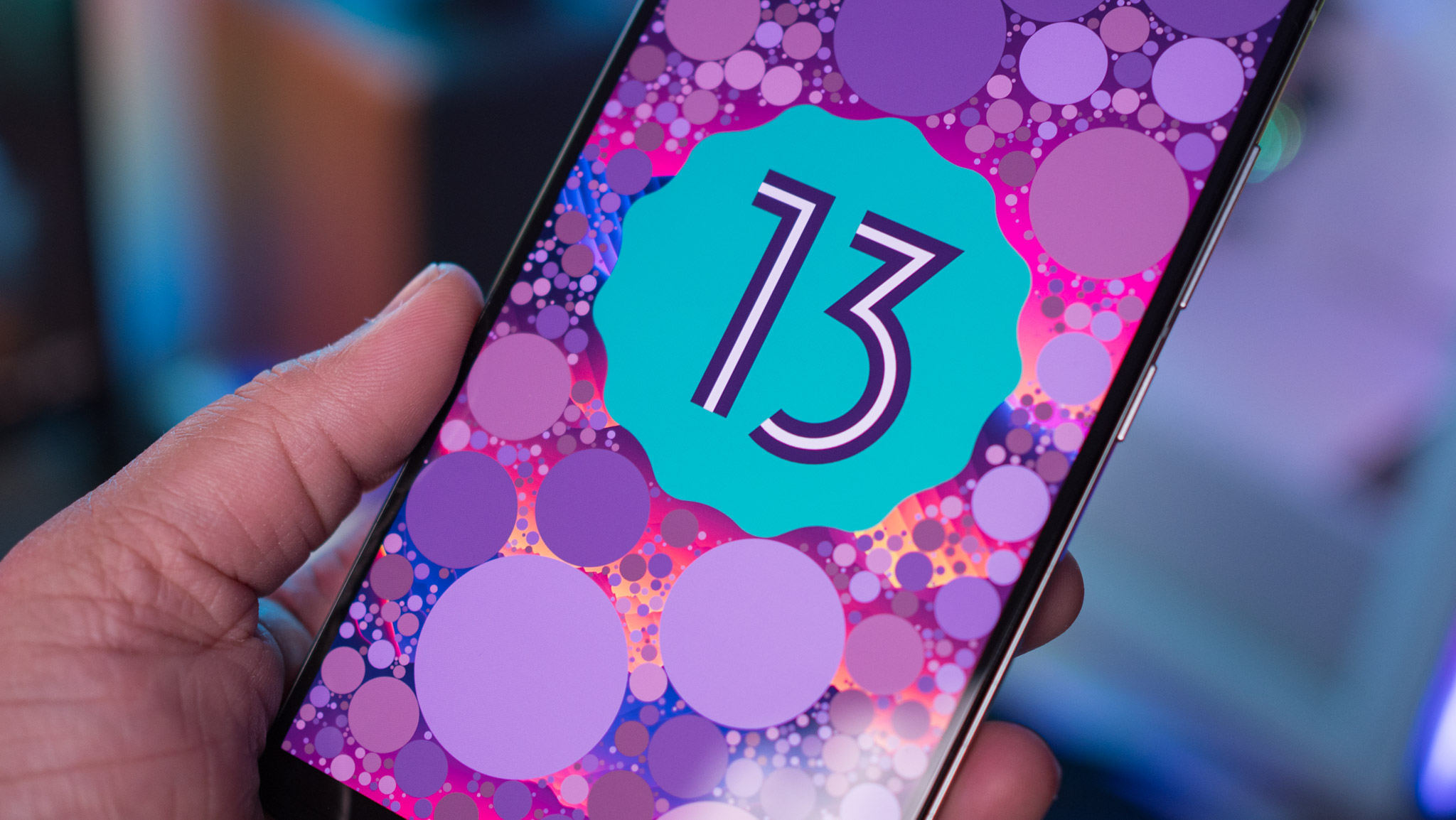
Vivo continues to use two software interfaces, and the iQOO 11 runs Funtouch OS 13 based on Android 13 in global markets. The Chinese variant comes with Origin OS instead, and at this moment, it's unlikely we'll see a global release of the skin.
Funtouch OS 13 hasn't changed too much, and the interface has bright colors and a modern design that looks good. One interesting point is that Vivo's phone dialer is intact here; most manufacturers have gravitated to Google's phone dialer and Android Messages for texts as the standard choice. Only Samsung and ASUS (and iQOO) continue to bundle their own dialers, and for what it's worth, you'll find Google's alternative available out of the box.
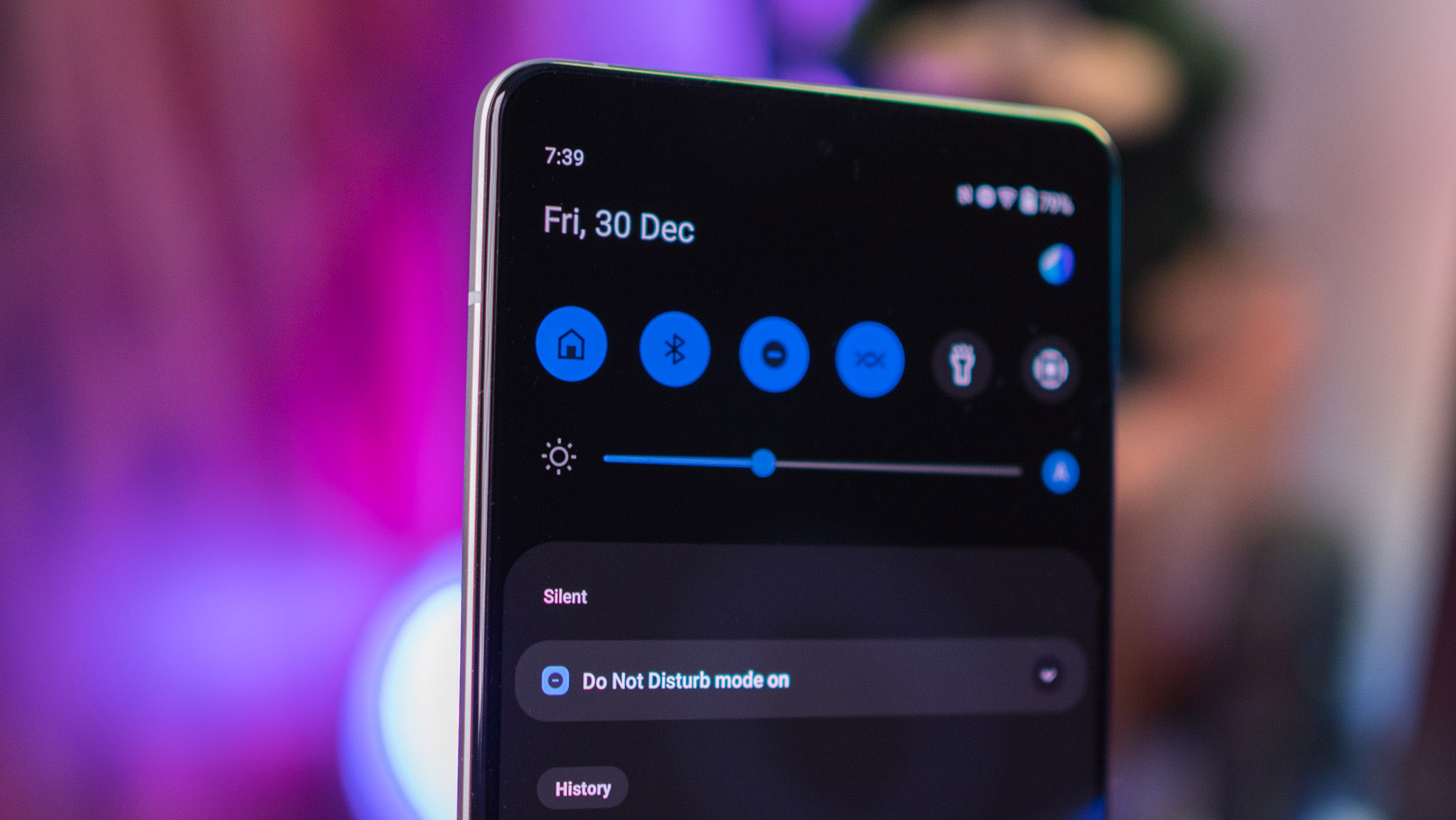
There's no Material You aesthetic here, and that's a letdown considering the dynamic color picker feature would have come in handy. That said, you get a standard notification shade with toggles and incoming notifications located in the same pane, and there's an app drawer that also doubles up as a list for all available widgets.
You also get a ton of customizability here, but the settings could use a bit of work regarding categorization. There's some bloatware as well, but most of it can be uninstalled without any hassle. As for software updates, iQOO says it will roll out two platform updates to the iQOO 11, which is one less than the standard. For its part, iQOO is doing a good job with rolling out updates on time; the iQOO 9 Pro got the stable Android 13 release in November, ahead of a lot of its Chinese rivals.
Funtouch 13 gets a lot of the basics right, but it needs a bit of polish to make it as good as MIUI 14 and ColorOS 13.
iQOO 11: The competition
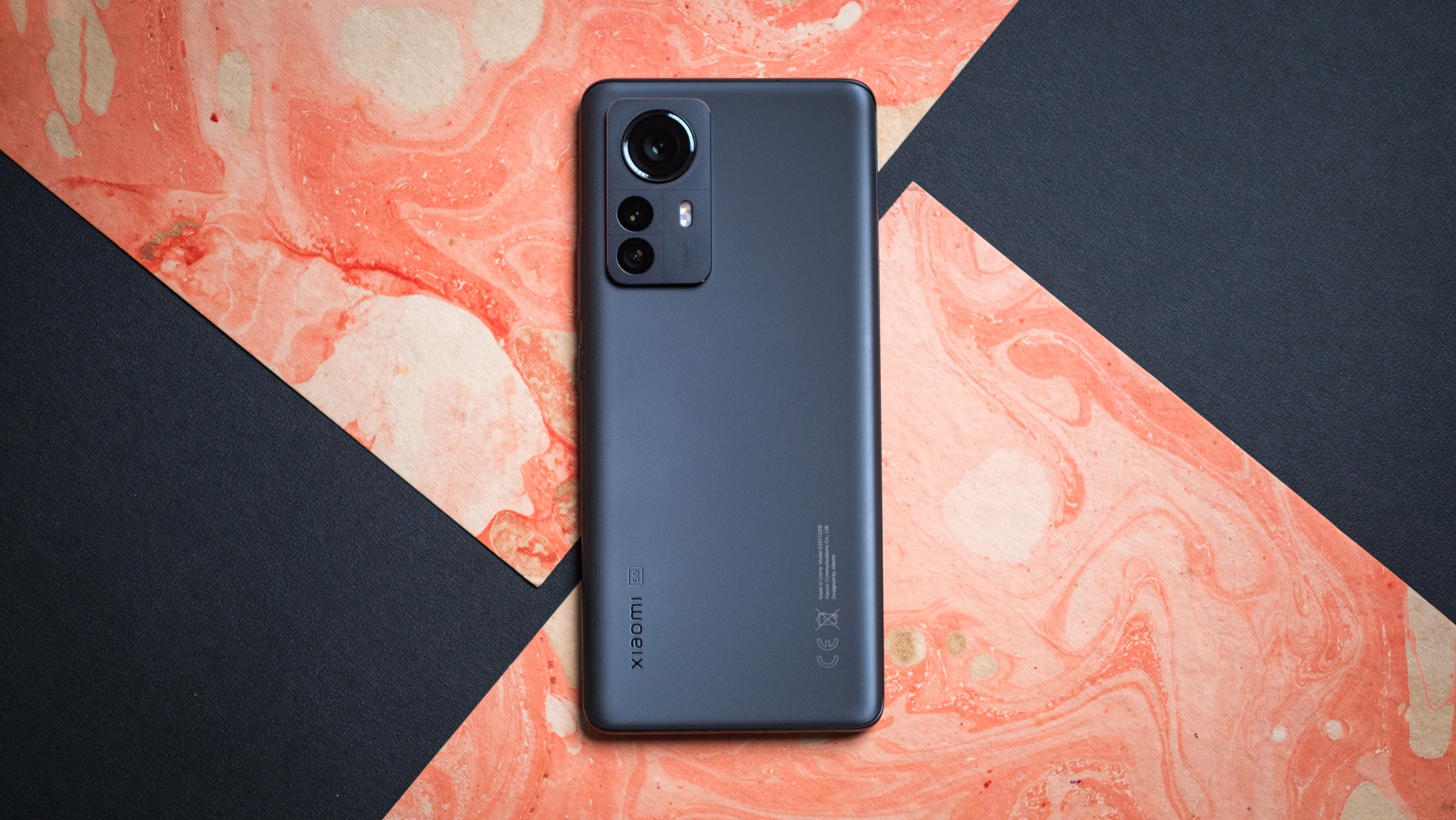
There's a lot of choice if you want a device with high-end hardware. The iQOO 9 Pro continues to be a stellar alternative, and it has a similar design, same cameras, 120W charging tech, and is just as fast in daily use. It's already on Android 13, and given that the device has been available for a while, there are enticing deals to be had.
The Xiaomi 12 Pro is also a good choice if you want the best cameras in this category. Xiaomi went with a more mainstream design for the 12 Pro, but the fundamentals are rock-solid here, and you get a few extras like wireless charging. Of course, the Xiaomi 13 series is now official in China and slated to make its way to other markets shortly, and that's another potential candidate to consider.
iQOO 11: Should you buy it?
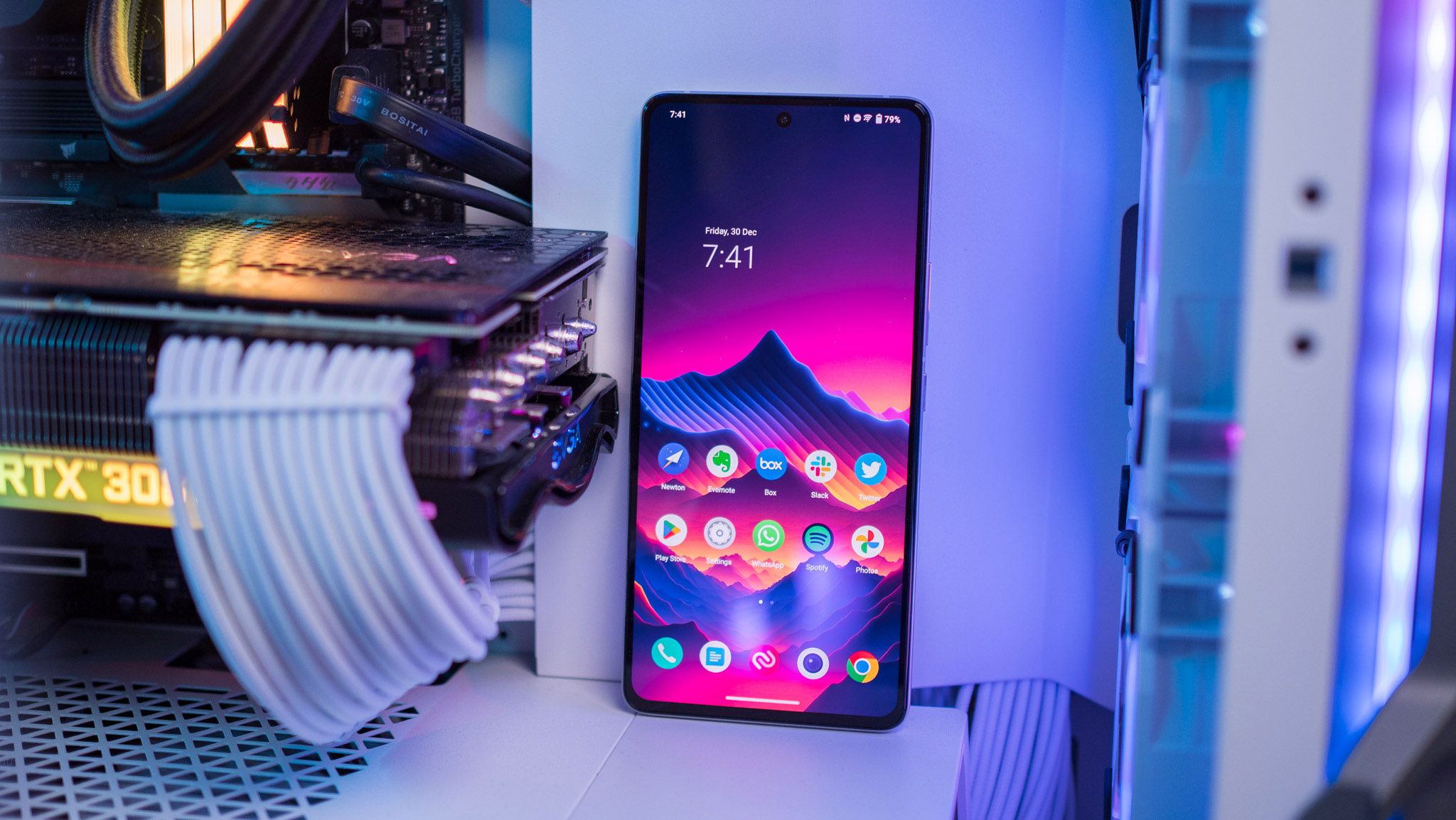
You should buy this if:
- You want a phone that will turn heads
- You need a gaming phone that has the latest internal hardware
- You want a phone with a flat AMOLED panel and 144Hz refresh
- You want a large battery and ultra-fast charging tech
You shouldn't buy this if:
- You want a phone with IP68 ingress protection
- You need wireless charging
- You're looking for versatile cameras
iQOO nailed the fundamentals with the iQOO 11; the phone has a vibrant 144Hz AMOLED screen, and the fact that it is a flat panel will be a big selling point to those that don't like curved screens. The 50MP camera takes great photos in any situation, and while the auxiliary lenses aren't quite as good, the main camera by itself has a lot to offer.
The fact that this is one of the first phones to launch with the Snapdragon 8 Gen 2 makes it an attractive option to customers eager to get their hands on the latest hardware, and it is a fantastic gaming phone. I like the bold styling and the use of vegan leather at the back as well — it makes the device a little more distinctive against the likes of the iQOO 9 Pro.
The software is better than earlier iterations, but it still needs a bit of work, and iQOO should offer more software updates. The iQOO 11 is coming to markets where there's no shortage of rivalry in this category, but iQOO managed to do enough to make the phone stand out.

Harish Jonnalagadda is Android Central's Senior Editor overseeing mobile coverage. In his current role, he leads the site's coverage of Chinese phone brands, networking products, and AV gear. He has been testing phones for over a decade, and has extensive experience in mobile hardware and the global semiconductor industry. Contact him on Twitter at @chunkynerd.


